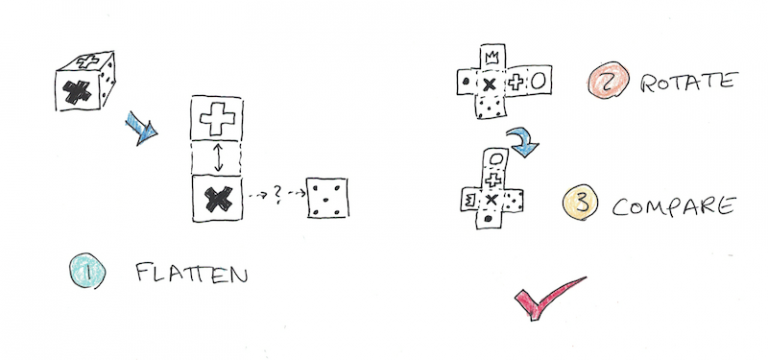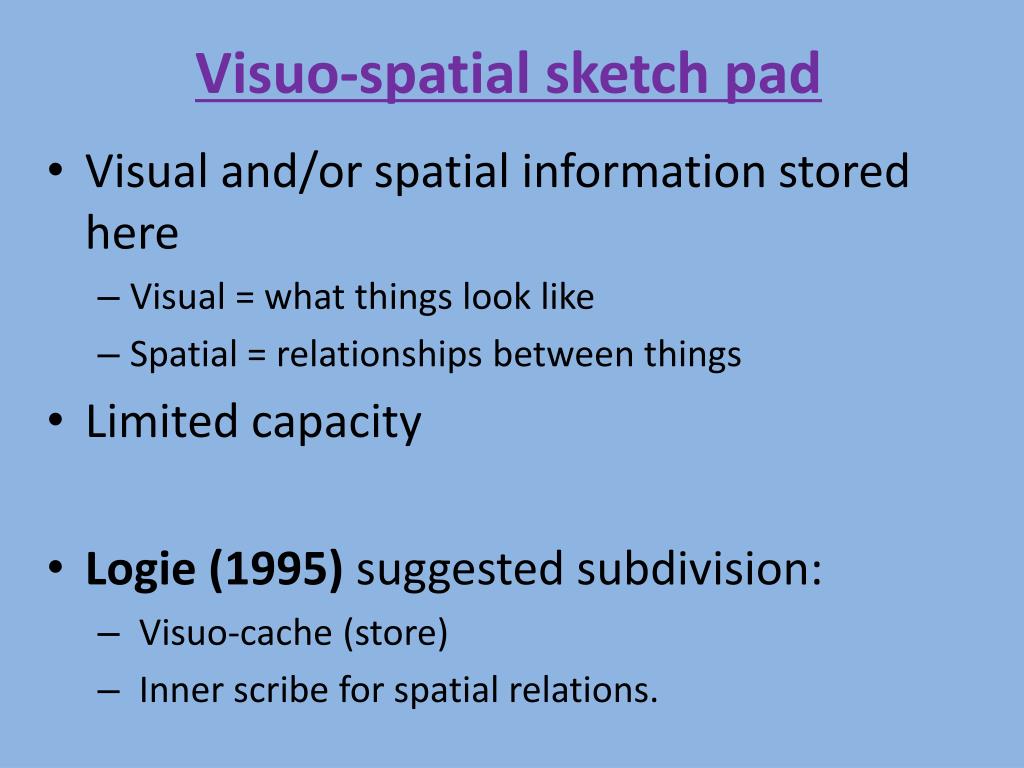

The information circulates through the short term memory stores back to the central executive into the long term memory. Cite this page: N., Sam M.S., 'VISUOSPATIAL. VISUOSPATIAL SCRATCHPAD: 'Similar to a computer memory chip, the visuospatial scratch pad holds and manages spatial information such as shapes, colors, and objects positions. It takes information from external sensory stimulus which goes through the sensory register to the central executive. an element or subsystem of working memory utilized for practicing or employing visual, imaginal, or spatial data. It was also regarded as having limited capacity but can deal with different types of sensory information. Finally, the central executive controls the other components of the working memory and controls all cognitive processes. This store is limited in capacity as it holds approximately 3-4 objects at a time. The sketchpad is sometimes said to be divided into visual, spatial and kinaesthetic (movement parts) and is located in the right hemisphere of the brain. On the other hand the visuospatial sketchpad (the inner eye) holds the informations we see and manipulates spatial information.

It consists of two separate components which work together the primary acoustic store (the inner ear) which is very limited as auditory information decays very rapidly and the articulatory loop (the inner voice) which revives memory traces by rehearsing them in your head. The phonological loop is the system that deals with the temporary storage of auditory information. The visuo-spatial sketchpad is the component of working memory that processes visual information (the visual cache) and spatial information (the inner. They thought there were 3 different stores for short term memory the phonological loop, the visuospatial sketchpad, and the central executive. In short-memory retention and recall, these two pathways are particularly important.The working memory model was proposed by Baddeley and Hitch in 1974. Contents in episodic buffer can be combined from phonological loop (verbal), visuospatial sketchpad (visual-spatial) and long-term memory. Is there a visual spatial sketchpad somewhere?Īlthough it appears to be more active in the right hemisphere, the visuospatial sketchpad appears to be located in the parieto-occipital region of both hemispheres (Barbas, 2000 Leh et al., 2010). Visuospatial ability is defined as the ability to imagine objects, create global shapes by locating small components, or comprehend the differences and similarities between objects. autobiographical information, as well as ability to recall and produce memories based on them, are all important aspects of this. The role of phonological loop and visuospatial sketchpad in wayfinding was tested in a virtual maze employing dual-task paradigm through two experiments. The referential identifier of the data is known as the episodic buffer and serves as the source of information that is stored or retrieved. What are the benefits of having a good vision?Ī person’s visual and spatial ability refers to their ability to recognize visual and spatial relationships among objects. A visuospatial sketchpad can be used to track information’s location in the phonological loop and its sound in the visuospatial sketchpad. Photography, jigsaw puzzles, memory games, geography, origami, chess, drawing, and Lego building are just a few of the hobbies you might consider. Explore spatial puzzles: Developing hobbies that allow you to manipulate objects will improve your visual skills while also entertaining you. Visuospatial Sketchpad is a component of Working Memory Model proposed by Alan Baddeley and Graham Hitch in 1974.


 0 kommentar(er)
0 kommentar(er)
